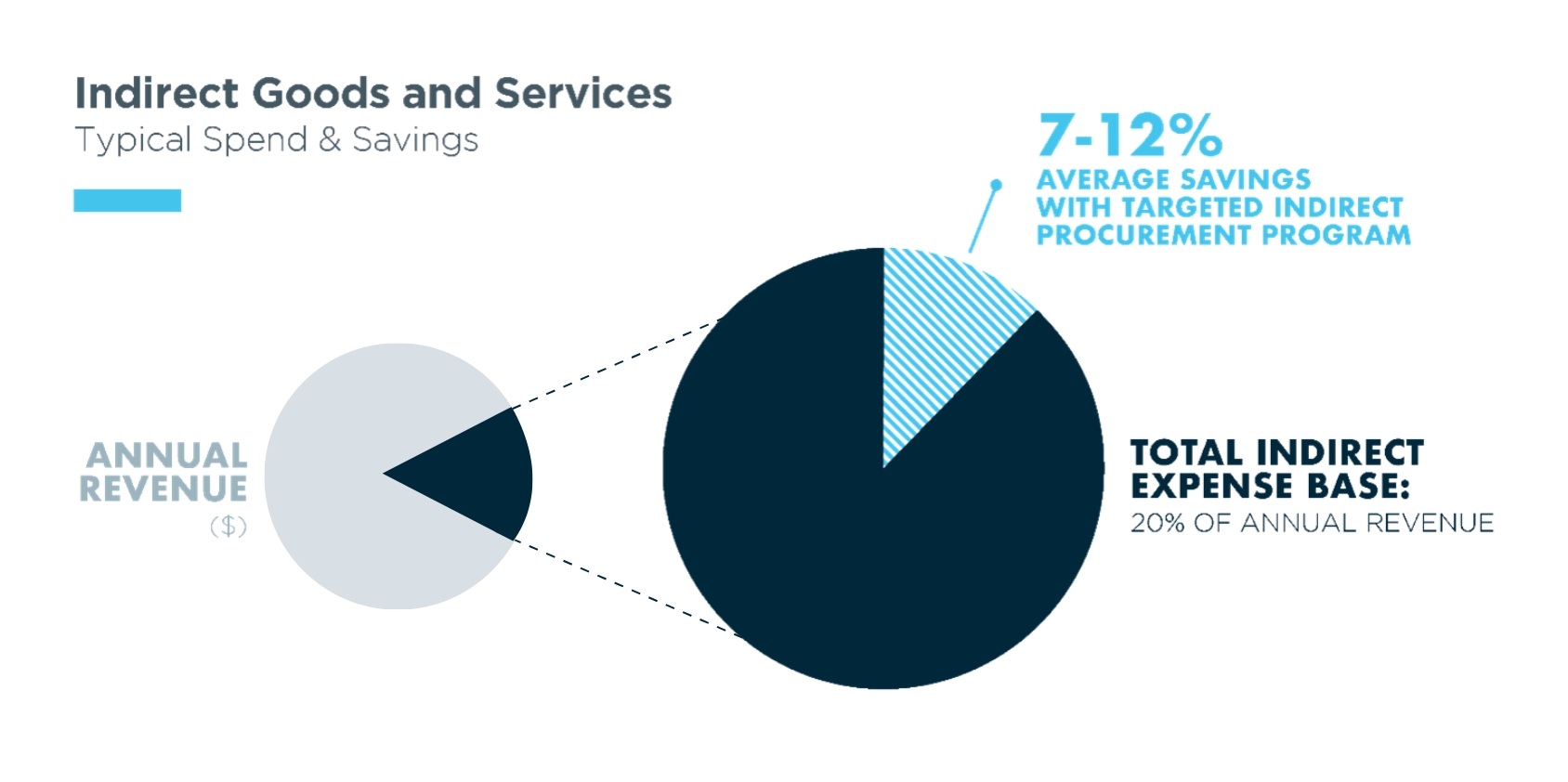

How To Unlock Savings In Indirect Expenditures
This article was originally published by StrategicCFO360.
Too many CFOs negotiate these costs and then forget about them. That’s not enough in today’s uncertain economic climate.
Strategically managing a company’s financial performance in the face of continued and evolving macroeconomic headwinds remains a key focus for CFOs today.
Organizations are tasked with a delicate balancing act of saving in the short term while strategically investing and positioning for long-term growth. According to Capital Economics, the economy is under the most pressure it’s experienced since the 2008 recession.
While reports indicate U.S. inflation is easing somewhat from its peak of 9.1 percent, experts anticipate inflation will remain above 3.0 percent, and there are no signals that it will come down anytime soon. In the coming months, consumer spending is expected to cool, and businesses are paying close attention to consumer confidence as federal student loans resume. Meanwhile, the job market remains strong, driving labor shortages.
Against this macro backdrop, CFOs are navigating and mitigating the near-term impact of an uncertain and volatile business environment, while simultaneously deploying long-term growth strategies—such as investing in human talent, leveraging resources toward product or service innovation, driving market growth and ultimately increasing profitability.
When considering these external pressures, CFOs and financial leaders who pay particular attention to the company’s third-party expenditures on indirect products and services can drive significant financial benefit. Indirect expenses typically equate to as much as 20 percent of a business’s annual revenue; targeting this expense base can yield material cost reductions that represent an immediate opportunity to improve profitability.

Keeping in mind the headwinds plaguing today’s economy, strategically targeting indirect expenditures can enable companies to reduce costs without a negative trade off, as might be seen with other approaches such as headcount reductions—often the first area considered to generate short-term cost savings, but nevertheless an area that can result in unintended long-term consequences.
As companies face increased scrutiny and leaders are tasked with finding cost savings and operational efficiencies in every corner of their business, it is more important than ever for companies to pay closer attention to the expenses, policies and controls associated with sourcing and procuring Indirect spend.
Here are three considerations for CFOs looking to drive profit improvement across indirect spend categories:
Cost reductions achieved on indirect expense spend categories drive material and rapid financial benefit that can be used to fund new organizational priorities and initiatives.
Today, leadership teams contend with an ever-evolving list of challenges in an increasingly fast-paced business and supply chain environment. The focus is placed on business initiatives that drive top-line growth and competitive differentiation. Investing time and resources in indirect procurement as a profit improvement, risk management and social responsibility function is therefore not always on the radar. However, the savings opportunity this investment represents can yield a significant bottom-line value that can, in turn, help fund the organization’s high-priority initiatives—such as retaining and investing in top talent, product and services development, new technology and more.
Investing in driving cost reductions across indirect expenditures yields material short-term benefit; sustaining this ROI and building on the initial results requires new resources and technology.
Companies today need help to realize the true value of procurement. However, in a disruptive economic environment with rising costs, talent shortages and more, building a high-performing function—including hiring top talent, implementing new technology and managing organizational change—can be daunting.
Organizations can try to build capabilities themselves, but typically lack the resources, expertise and technology needed, and do not have the time, bandwidth or experience to develop these capabilities in-house. They can turn to costly consultant services, but these engagements often do not produce tangible results. Finding a trusted third-party partner who will not only build out the playbook for cost savings initiatives and the roadmap to deliver, but also execute on behalf of the organization to ensure the results are realized, offers a more certain approach to value realization.
Market dynamics affect indirect spend categories over time; ongoing management of these categories is critical to ensure year-over-year achievement of financial targets.
Some companies may view procurement as a series of one-time sourcing events, where teams declare victory after finishing an RFP, then don’t revisit the spend category again, in some cases for years at a time. However, indirect expense categories are materially affected by today’s macroeconomic challenges; inflation, rising labor costs, supply chain issues and commodity price fluctuations mean that there are significant challenges—and opportunities—presenting themselves every day across the spectrum of indirect expense.
A high-performing procurement function is responsible for mitigating increases and capitalizing on opportunities across this large and varied expense base. Instead of treating cost reduction initiatives as a one-time event, procurement must be actively managed, just like one’s personal finances, to ensure companies maximize cost reductions and minimize unexpected impacts to budgets.
Internal data points or sourcing events from in-house procurement teams alone are often not enough to drive impactful cost saving decisions in a volatile economy. In those scenarios, look to an outside expert who specializes in Indirect Procurement, executes thousands of sourcing events day in and day out, and has the industry-wide data and market insights to drive significant profit improvement for the organization.
As financial leaders face rising pressure, both internally and externally, to find cost savings for their businesses, the opportunities for indirect expense management are too important to ignore. Whether you develop capabilities internally, partner with third-party experts, or do both of these things in combination to help identify and drive results, driving action to uncover savings on indirect expenditures is a must-do in today’s uncertain economy.






